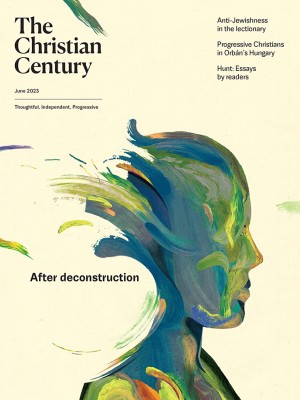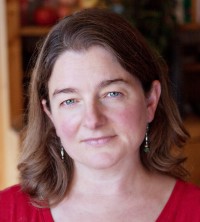The women of midcentury moral philosophy
Two new books explore the intertwined scholarship and friendship of Philippa Foot, Elizabeth Anscombe, Iris Murdoch, and Mary Midgley.
Tracing the transformation of moral philosophy through the friendships of four utterly unique women who gathered around Oxford in the mid-20th century requires getting those four people into a room together at least once, right? As I was reading the exceptional and unusual accounts of these friendships in two recent books, I kept waiting for a moment when I might see Philippa Foot, Elizabeth Anscombe, Iris Murdoch, and Mary Midgley all gathered together. I read all the way through Benjamin Lipscomb’s version and most of the way through Clare Mac Cumhaill and Rachael Wiseman’s version until I finally encountered such a scene.
It was 1947. All four women had been philosophy students together at Oxford during World War II, but they’d scattered since then. Their individual friendships had been strained by love and war and competition for the same few prizes available to women. Now Foot was a lecturer at Oxford, and she was the most financially and occupationally stable of the four. She lived at 16 Park Town with her husband, Michael Foot, a former lover of Murdoch’s. Anscombe was a research fellow at Oxford. Murdoch had a fellowship at Cambridge, and she came to Oxford frequently, sometimes bringing Anscombe’s children with her or bringing them back to Cambridge to Anscombe’s husband.
Read our latest issue or browse back issues.
Midgley had just returned to Oxford to start a thesis on Plotinus. The four of them, Midgley remembered decades later, sat in Foot’s front room several times over that interval of their lives and did their “collective best to answer the orthodoxies of the day, which we all saw as disastrous.”
The scene matters to me because these women’s relationships, philosophies, and identities are so complex and varied that it is hard to imagine how they, as a group, might “bring philosophy back to life,” as Mac Cumhaill and Wiseman claim, or “revolutionize ethics,” as Lipscomb claims. There is no school that they founded per se (Lipscomb asserts one, but it’s not clear that things cohered to this degree). They published no papers together. They did listen to each other, argue with each other, and teach each other, which was no small achievement in their misogynistic environment. Then each of them went her own way, carrying the critique they’d developed in the front room at 16 Park Town into her own distinctive work.
The orthodoxies of the day were the language-guided philosophies of A. J. Ayer, R. M. Hare, and J. L. Austin, among others. Ayer had offered a devastating critique of all metaphysics and become so personally powerful that few wanted to risk his disdain by suggesting metaphysical elements to philosophy. All ethical language, he said, is empty and meaningless. Hare insisted that war had taught him that the universe is value-free. Austin, revered at Oxford for decades, believed that to make progress in philosophy, philosophers have to hunt down the exact meaning of every word, piece by piece. He convened colleagues on Saturday mornings to carry on these informal interrogations of language—a gathering to which no women were invited.
These men had set a project for themselves, as Mac Cumhaill and Wiseman put it, to “kill off the subject formerly known as ‘philosophy’ and to replace it with a new set of logical, analytical and scientific methods.” There are no universal values, all three argued. Nothing can be called good or bad by any objective standards. Individuals are left alone in a value-free universe to discern what little can be objectively known.
The effect of this work was essentially destructive. It broke down ancient language and ideas into tiny pieces that the men could then destroy with rhetorical hammers. “It did not help people think about their most urgent questions,” Lipscomb writes, but it still implied an inverse code of ethics: it is right and good to deny the reality of values.
The four women wanted to face a broader set of concerns. Perhaps most profoundly, they wanted a moral philosophy that could confront the evils of the Nazi era. They wanted a vocabulary and an understanding of the human person that could name evil as evil, and not just as part of another language game. They came, over decades of conversation and common reading, to develop moral philosophies that asserted, as Lipscomb writes, “moral truths, grounded in the distinctive nature of our species—in facts about what human beings need if they are going to thrive.” They did not walk in lockstep, and they rarely agreed, even on anything so basic as belief in God. But they all turned to ancient sources and developments in human psychology and biology to reject the worldview their male counterparts insisted on so vehemently.
Both books point to the fact that these women’s voices would never have developed as they did had it not been for the war. Oxford was emptied of most male students in the early 1940s. Instead of the Oxford dons, most of whom were serving in the military, the teachers were women and Eastern European refugees. Both books cite Midgley’s observation that this evacuation made it “a great deal easier for a woman to be heard in discussion than it is in normal times.”
The distinctiveness of each woman’s life and work is as important as their friendships and the organic, and often diffuse, intellectual community that they cultivated with each other. Anscombe was Catholic, having converted against her parents’ wishes as a young adult. She was eccentric, outspoken, and self-abandoning. She wore pants when the rule was that women had to wear skirts. Sometimes she would carry a skirt with her and put it on in the hallway over her pants before entering a classroom. She had seven children, who neighbors said ran wild while she held tutorial after tutorial. She believed that certain things truly matter, and domestic dirt was not one of them.
Her work was deeply influenced by Wittgenstein, and it took her a long time to separate her vision of the moral life from that of her mentor. But she was a force, with a habit of thinking and rethinking until she could make a passionate claim. By all accounts, she demolished C. S. Lewis in a 1948 debate. Decades later, she was still mulling over the claims each of them had made, wondering if either of them had taken seriously enough the problem of the foundations of natural philosophy.
Murdoch was, from the beginning, as much a novelist as a philosopher. She eventually saw fiction as the better vehicle for communicating the complexity of her moral vision. Whereas Anscombe was interested in getting things right (and being able to tell when they were wrong in her own rigorous and demanding mind), Murdoch was a creature of doubt: self-doubt to start with but also doubt about the prevailing culture, doubt about religion, doubt about human nature. She remained the group’s primary experimenter, trying out new forms and new content throughout her life, never landing on something like certainty. Foot said that Murdoch had a spiritual life while Foot herself had what she called a moral life.
Foot’s moral life was rooted in the haunting images of concentration camps that she had seen on newsreels at the cinema in 1945. She needed to understand and find a way to express what made the Nazis’ actions objectively wrong. The last thing she could do as a result of seeing the horror of that human catastrophe was to shrug and say there were no universal values. She had a career at Oxford and became Hare’s “foremost opponent,” Lipscomb asserts, engaging regularly in exchanges that she called her “ding-dong battles with Dick.” She became dissatisfied with her initial conclusion that the moral life was a better life—that it led to human thriving. She saw that there were instances where this was certainly not the case: a moral act can lead to one’s death, for example. In her philosophical environment, this was difficult to reckon with. She could neither dismiss this contradiction nor fit it neatly into the philosophical tradition.
Foot came from a well-heeled family. She was the granddaughter of Grover Cleveland. She dressed sharply, in contrast to her friend Anscombe. The two of them made a strange pair as they walked the paths at Oxford, intently discussing the mystery of cause and effect.
Midgley left Oxford and lived in Newcastle for much of her life with her husband, a philosopher and a pioneer in computer science. After raising three boys, she returned to the questions that she and her friends had discussed years earlier, viewing them through the broader context of biology, psychology, animal behavior, and other disciplines that hadn’t had much to say about moral philosophy. She began to ask critical questions about the philosopher’s place in culture, wondering, for instance, how marital status or social position makes a difference in the way a philosopher defines the human. She was easily overlooked in philosophical circles, however, because she ranged outside disciplinary boundaries. She strongly critiqued the narrow Oxford worldview in a way that wounded her friend Foot, who was an Oxford insider.
But perhaps because her career developed later than the others and because she was outside of Oxford for many years, Midgley was the group’s synthesizer. She developed a moral philosophy that grounded the questions with which all four women wrestled in “the character and needs of the human animal,” as Lipscomb puts it.
I have the sense that Midgley was the underlying force behind both The Women Are Up to Something and Metaphysical Animals. She lived the longest, and all three authors credit her as having shaped their undertaking. Her voice resonates throughout both books.
It must have been fairly distressing for the authors and publishers of these two books to discover that they were both working on the same project at the same time in essentially the same way. Both books are excellent; the research is thorough, and they both draw on the same source material. Mac Cumhaill and Wiseman are a little better on the intellectual atmosphere at Oxford and its implications for these women. Lipscomb gives an excellent summary of the body and trajectory of each woman’s individual work. Both books provide unique insights into the field of ethics and the debates about language and meaning and the human condition that reverberate today. And both books offer an important and rare look into the role of community and friendship in shaping thought, belief, and life.









